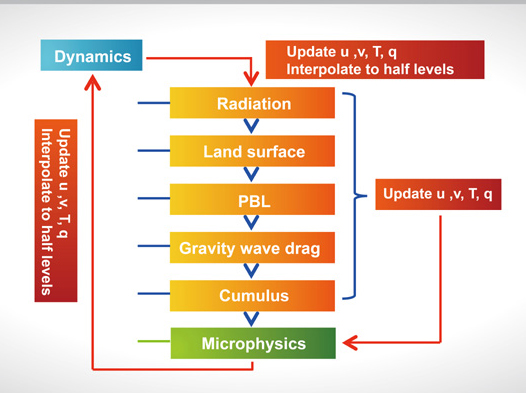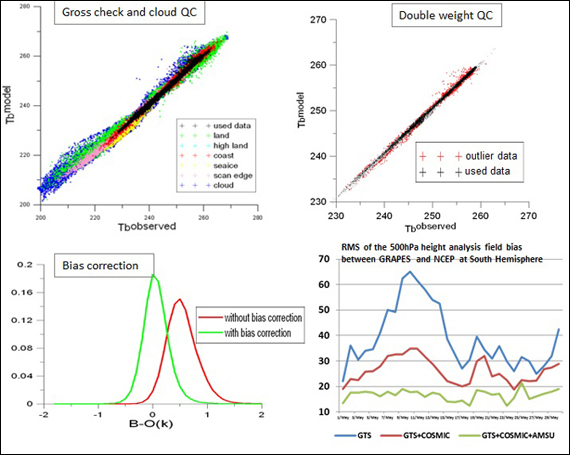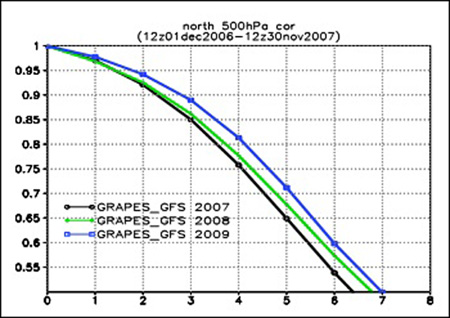Home>Features
27-03-2014Source:China Meteorological News Press
Global/Regional Assimilation Prediction System--GRAPES is the numerical prediction system developed by China Meteorological Administration independently. China Meteorological Administration sees the numerical prediction technology as the most important field for the national meteorological science and technology innovation, and the numerical prediction and innovation base was established in 2001. At the same year, the Ministry of Science and Technology together with China Meteorological Administration provided support for the project of "China Meteorological Numerical Prediction System Technology and Innovation Research" with a period of five years, which was listed as one of the National Tenth Five-Year Plan of science and technology. After over ten years' development, China Meteorological Administration’s numerical prediction system has formed the one taking GRAPES as the principal, and integrating business and study.
GRAPES can be divided into two systems—global numerical prediction system (GRAPES-GFS) and regional mesoscale numerical prediction system GRAPES-MESO.
Dynamic core features in GRAPES
·Fully compressible equations
·Height-based terrain-following coordinate
· Option of hydrostatic and non-hydrostatic
·Arakawa staggered C lat-lon horizontal grid but V at poles
·Charney-Phillips vertical arrangement of prognostic variables
·2-time-level SI-SL time-stepping scheme
·GCR –solver for Helmholtz Equation
· Mass fixer
·Polar filter

Main members of Physics
I WRF physics package
II Other implemented physics
—Radiation:
·RRTMG LW(V4.71)/SW(V3.61)
·Morcrette LW / Fouquart & Bonnel SW
—Cumulus:
·Simplified Arakawa Schubert with modified entrainment and detrainment rates
·Tiedtke scheme
— Microphysics: two-moment microphysics (Liu et al.)
— Cloud: Xu & Randall diagnostic cloud
—Land surface: CoLM
— Gravity wave drag:
· Baines & Palmer (1990)
· McFarlane(1987)
—Small scale orographic form drag : Beljaars, Brown & Wood(2004)
GRAPES-GFS
Among them, GRAPES-GFS can provide the global weather situation and precipitation prediction for 10 days, with the current horizontal resolution of 0.5 degrees, top pressure of 10 hPa, and 36 vertical layers. It is able to assimilate the three dimension variational assimilation(3DVAR) system of the conventional data and satellite data. Global observation data preprocessing and quality control, background error covariance statistics, and satellite data deviation correction are its main features. GRAPES-GFS involves power framework and physical process, based on whose characteristics, the parallel computing structure and the underlying information exchange mechanism are designed.

Satellite data quality control and assimilation effect:

In 2009, the GRAPES-GFS prospective operation was implemented. In November 2013, GRAPES-GFS operational system completed the first upgrade. According to the statistics and synoptic meteorology results of the upgraded system, the calibration system prediction has elevated, the effective prediction validity of the northern hemisphere and East Asia has been improved significantly, the deviation of weather forecast has been obviously decreased, and the rainfall distribution in tropics and East Asia is more reasonable. At the same time, compared with the current global business prediction system (T639), the prediction performance of the upgraded system is close to its prediction level within 72 hours.

Integrated test on anomalous correlation index of 500hPa height field in Northern Hemisphere in different years.

The comparison of anomalous correlation index of 500hPa height field in Northern Hemisphere between GRAPES-GFS and T639
|
|